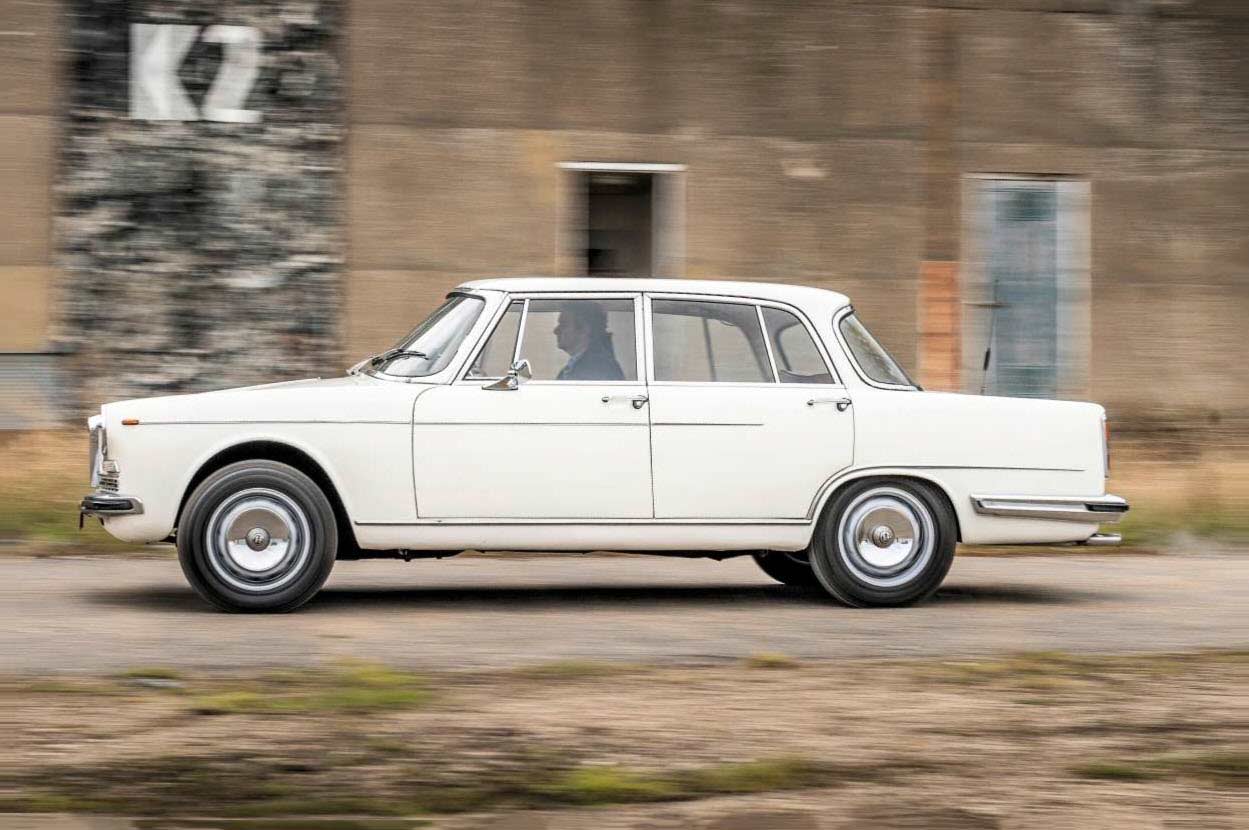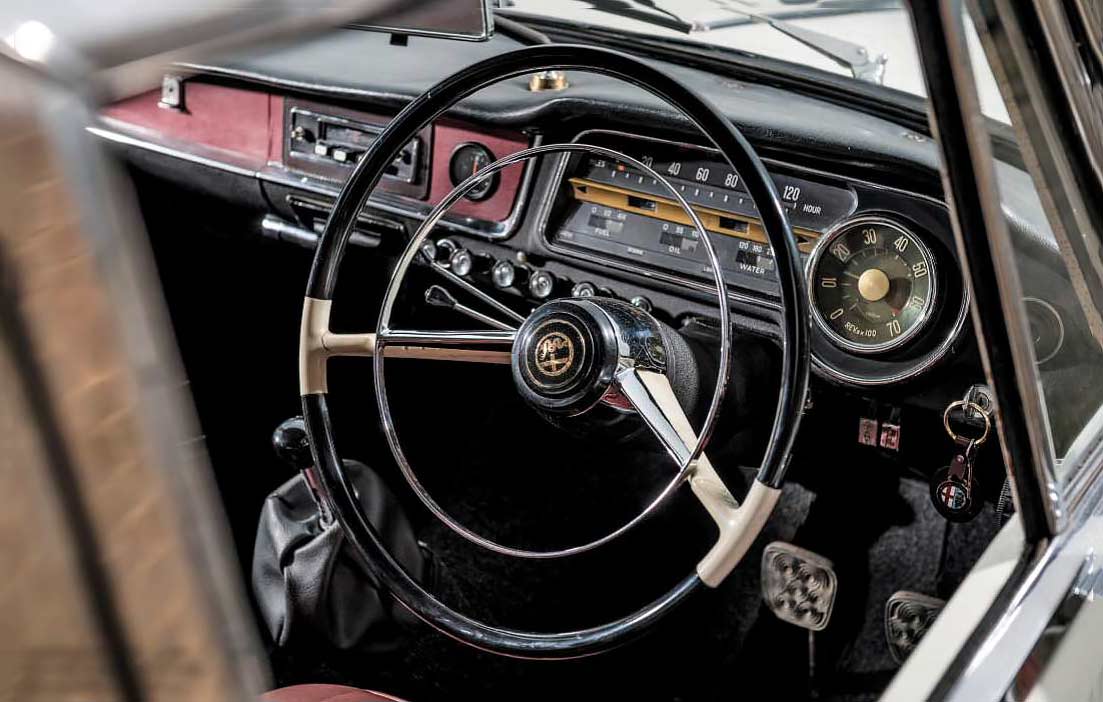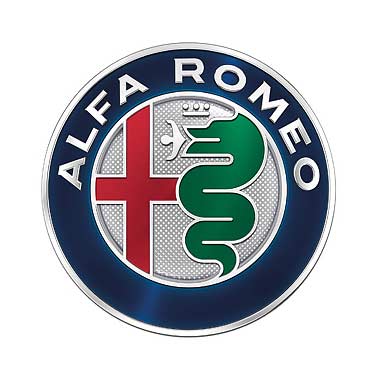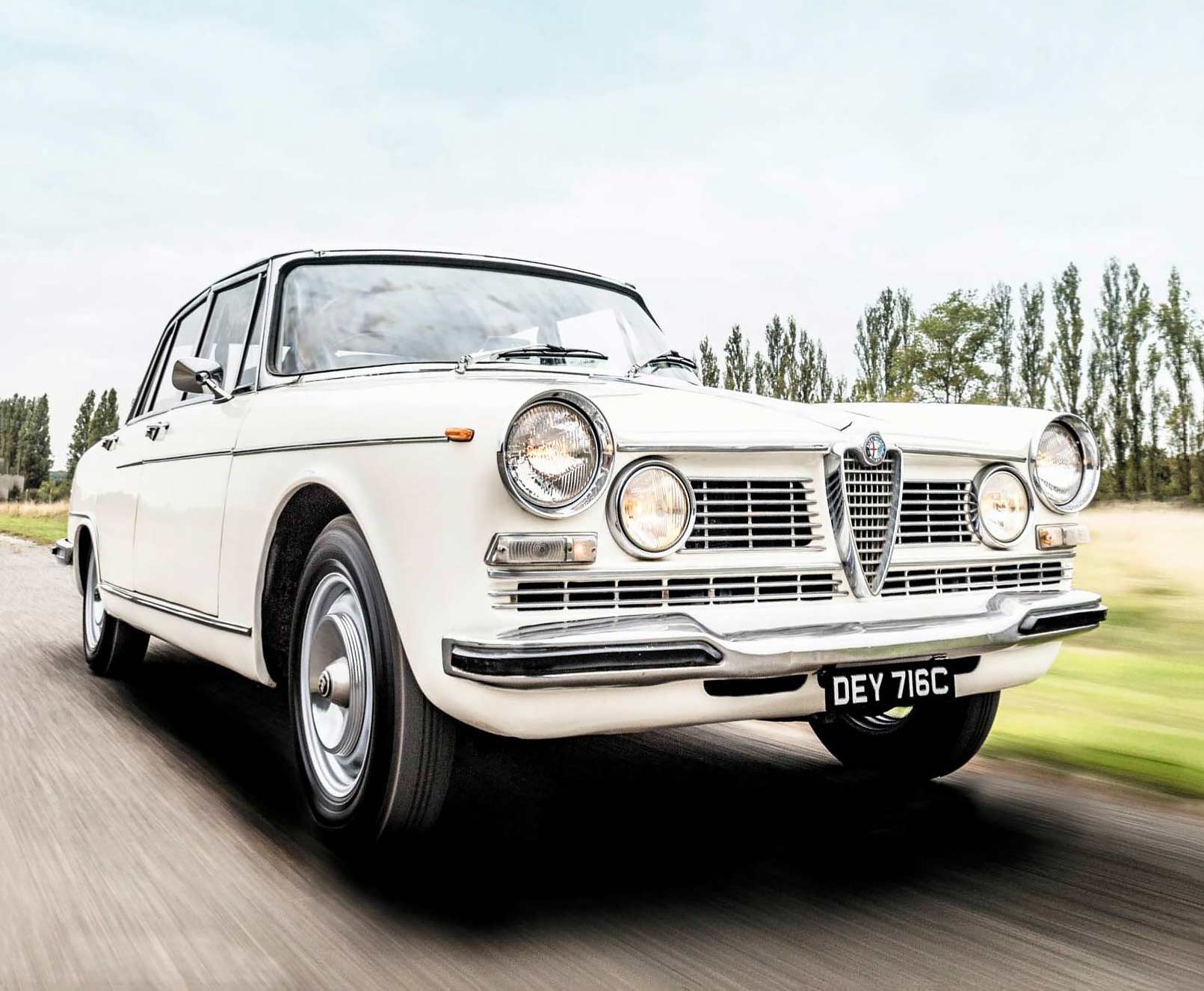
The white-collar Italian Job Favoured by the Italian establishment but misinterpreted by the mass-market, the Alfa Romeo 2600 Berlina was the company’s last flourish of four-door flagshippery for more than a decade. We drive a rare survivor in the UK… The 2600 saloon represented a final flourish of flagshippery for Alfa before it downsized as an entire brand. We find a rare example that has found its way in to the UK. Words Andrew Roberts. Photography Alex Tapley.
A confession to the reader – I’ve had a penchant for large European saloons for as long as I can remember. Of course, I’m not understating the importance of many and various post-war sports cars but for me the idea of arriving at a sun-drenched setting in an imposing motor car is irresistible. I’d seen an Alfa 2600 Berlina in 1972’s The Mechanic and read about it in The World Car Year Book and The Observer’s Book of Automobiles, but had never even seen one in the metal, let alone driven one. Could this Alfa Romeo hope to live up to over three decades of expectations?
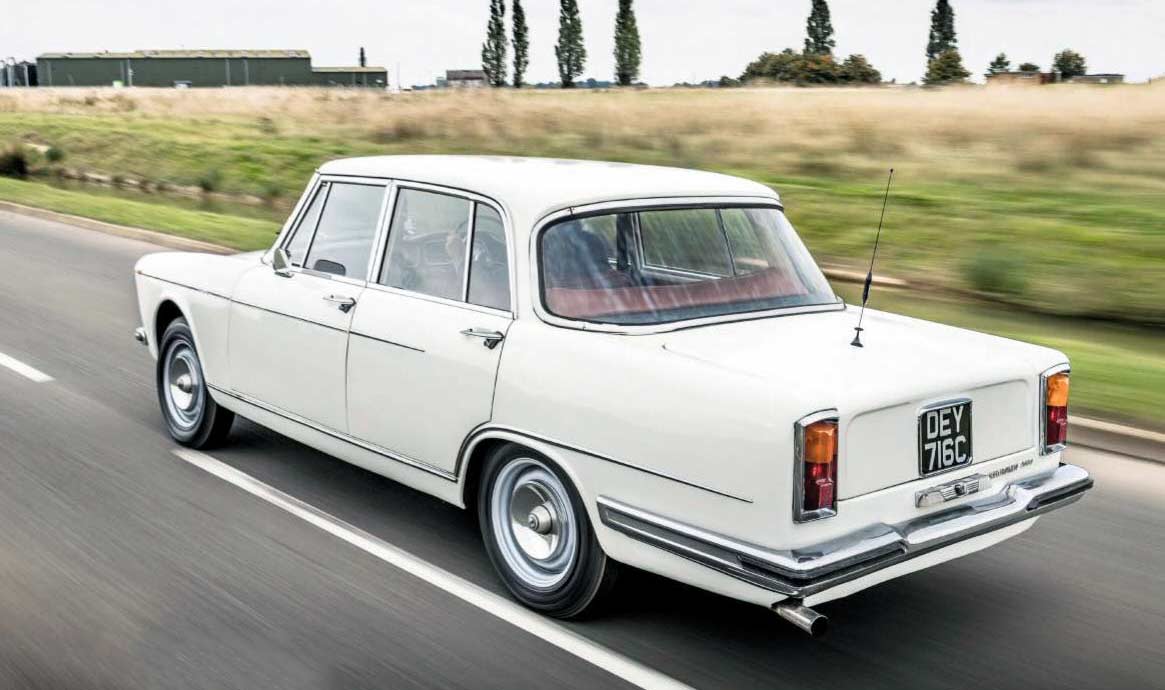
DEY 716C is one of several Alfa models that were assembled in South Africa in order to circumvent that country’s import regulations. The Sea Foam White Berlina left the East London factory in the Eastern Cape province on the 22nd October 1964, and was recently imported into the UK by its proud owner Jeremy Wilson. My initial impressions are promising because the in-house coachwork is restrained yet imposing. To say that Alfa’s flagship saloon lacked the overt glamour of the Sprint coupé by Bertone and the Spider by Touring is to state the blindingly obvious, because in the early Sixties the Italian bourgeois demanded a low-key appearance from their business transport.
In the metal the large glass area, with the raked windshield, looks clean and understated, and the wraparound rear screen clearly anticipates the Giulia. Its most dramatic aspect is the one that would be glimpsed in the rearview mirrors of lesser cars, and with all four headlamps blazing the 2600 looks especially dashing. Alas, the Wilson Alfa signals its disapproval of creating such a vulgar display during the daylight hours by instructing its battery to temporarily cease all operations. As Jeremy notes, ‘The 20-mile journey from my home to here is the longest I’ve completed so far!’
The low-key theme extends to the cabin, with an extremely marked contrast from the hide and timber of a Jaguar S-type or Rover P5, and a comfortable but extremely business-like interior with bare painted metal and rubber floor mats. Many early 2600s came with cloth trim and a front bench, but our example had PVC upholstery – practical if not especially luxurious – and the separate reclining front seats common to most post-1963 examples. These allow for an appropriately commanding driving position with the generous headroom reminding me that the Berlina’s coachwork was created at a time when respectable male Italian motorists wore Borsalino fedoras. The standard fittings range from the thoughtful – the dashboard-mounted air vents, the door pockets and the demister for the rear screen – to the vintage, in the form of a hand throttle. In fact the entire dashboard represents a voyage of discovery, with no labelling to mar the surprise of pulling out the cigar lighter when I attempt to switch on the wipers.
Being an Alfa Romeo, it’s natural that that fascia’s dominant instrument is the circular tachometer, with the linear speedometer relegated to secondary status. Dashboard-mounted mirror duly adjusted, I embark into the world of Alfa 2600 Berlina motoring. I had wondered whether DEY 716C would resemble a scaled-up Giulia Super in terms of road manners, but the steering seems specially designed to dispel any such ideas. The vast wheel needs a lot of spinning and, even when moving in a straight line, ‘vague’ seems to be the keyword of the day. Alfa Romeo publicity of the time positioned the 2600 as the ideal transport for urban sophisticates but the heaviness of the steering makes it apparent that it really isn’t an ideal town car.
In the context of early Sixties machinery the Alfa is not especially ponderous at low speeds – I’d put in on a par with a non-PAS equipped Jaguar 3.4S – and there remains the fact that this is a car that has been stored for several years. Our test marks something of an exploratory voyage for the 2600 – Jeremy has plans for its further ‘re-fettling’ – but in any case, its tendency to oversteer isn’t so pronounced as to sully the experience, and it serves as a reminder that Alfas prefer to be driven with vigour. Another issue that I suspect relates to the 2600 only recently being recommissioned concerns the braking. On paper, the set-up of servo-assisted Girling front discs and Alfa’s own finned rear drums would seem more than adequate, but in practice the pedal needs at least three emphatic reminders before the car deigns to halt.
But once the Alfa has undergone further work its abilities as a five-seater cruiser will be even more apparent. The transmission is a five-speed all-synchromesh gearbox with a choice of either steering column or floor levers and, as with many right-hand-drive Berlinas, this car is fitted with the latter. It’s an utter delight to operate, needing only the lightest of touches. For sheer precision, the 2600’s gears have few equals even from cars a decade its junior; the clutch is wonderfully light and the ratios so well-chosen that even a novice driver feels there’s no alternative but to urge the Alfa ever onwards. All the while, the two Solex carburettors create a constant but discreet accompaniment to your journey – an essential part of the 2600 experience. That engine note is more musical than any sounds that would emanate from the radio.
In fact, after just a few minutes I’ve forgotten almost all the mundane issues of life in 2017 Britain because I’m now Vittorio Gassman en route to a meeting with Gina Lollobrigida. In between mental images of speeding down the Autostrada A4 I manage to note that the Alfa Romeo’s ride qualities are perfectly balanced, being neither overly firm nor possessing that marshmallow-like sensation familiar to anyone who has piloted one of the American- influenced European saloons that emerged in the Sixties.
When travelling at low speeds the 2600 does convey the slight sensation of wishing to wander sideways but this is probably due to the rear suspension’s geometry and does nothing to impair my enjoyment of the Berlina. The best word to encapsulate my first experience of the 2600 is stability; corners can be taken con brio and it is an ideal A-road or motorway car. If I could hail a Tardis to transport me back to the Geneva Motor Show in 1962, I would certainly consider the debuting Alfa Romeo as a viable alternative to the Mercedes-Benz 220S ‘Fintail’.
The 2600 is also historically intriguing because it can trace its heritage back to the 1900 of 1950 – the first-ever Alfa to be mass- produced and monocoque-built – via the Tipo 102 2000 of 1957. The Tipo 106 2600 debuted in 1962 bearing a strong resemblance to its predecessor, bar a more subtle front grille with quad headlamps, and a lack of rear tailfins. Mechanically, the highlights were front disc brakes and a new aluminium powerplant – Alfa’s engineers modified the 2000’s four-cylinder block to create the company’s last inline six-cylinder engine, complete with twin overhead camshafts and hemispherical combustion chambers. Alfa’s publicity for the 2600 claimed that under the bonnet lay an engine that was the ‘heir to 1000 victories’. The 1900 had been sold as ‘The family car that wins races at the weekend’, and the 2600 looked set to continue this tradition.
Yet despite these improvements a mere 2038 saloons were sold in six years in contrast to 6998 Sprints, making the 2600 a rare example of a standard four-door being outsold by a coupé sibling.
After a day with the Wilson Alfa, my theory is that it was intended to appeal to an affluent Milanese or Roman driver who wanted effortless transport along the autostrada in a car that was fit to compete with any imported prestige offering, all at a price point lower than that of a Lancia Flaminia. However, a major challenge for Italy’s state-owned car maker was that of price, because motorists looking for a six-cylinder car for five often opted for the cheaper Fiat 2300 Berlina, which lacked the social cachet of the shield radiator grille but was highly agreeable nevertheless.
Another challenge to the 2600 was the change in the post-war Italian car market. Following the 1900’s disappointing commercial impact, a smaller model – the 1.3-litre Tipo 750 Giulietta saloon of 1955 – debuted at precisely the right moment during the post-war Italian Boom Economico. The company’s increasing focus on light- medium products continued with the Giulia that was launched only two months after the Tipo 106 and, after the demise of the 2600 range in 1968, it would not offer a large four-door until the 1979 Alfa 6. Given the low production figures, the 2600 Berlina would’ve been virtually hand-built at a rate of one or two per day, but in the Sixties it may well have been psychologically important for the state-owned firm to offer a saloon that would provide formal transport for police chiefs and government officials.
As for the Berlina’s UK sales prospects, these would have been limited to well-heeled connoisseurs; inflated pricing of all foreign cars meant Alfa ownership was always an exclusive prospect, and buying a 2600 saloon meant finding £2271 instead of paying £200 less for a Jaguar MkX or saving £500 by opting for a Slough-built Citroën DS. The Berlina may not have cost as much as the Sprint, which Alfa GB marketed at ‘a spanking £2949’, but it still would’ve required potential suitors to be in good standing with their bank managers before calling Belgravia 7746 to arrange a test drive.
So is the Alfa Romeo 2600 Berlina worth the wait? With any car that you’ve admired from afar for over 30 years there’s the inevitable risk of an anti-climax, because you can easily construct a mental profile that bears little resemblance to reality. But this isn’t the case with the 2600 Berlina. It may be right-hand drive and the surroundings unquestionably Home Counties England rather than Portofino, but that doesn’t matter one iota. In the words of Heon Stevenson’s tome British Car Advertising of the 1960s, ‘Alfa Romeo produced sporting cars for motorists who appreciated advanced engineering but could not spend days learning about or tending it’ – and that encapsulates the 2600’s appeal. It’s interesting to muse on how the Alfa might have fared in a Sixties devoid of import duties, because it could have then competed on a direct footing with the Daimler 2.5 V8. A British motorist might have been somewhat aghast at a cabin that bore more resemblance to a government office than a gentleman’s study, but the lure of that engine/transmission combination may well have swung it. As it is, the 2600 Berlina remains an idiosyncratically Italian car that was primarily designed for a very niche market within its home country. I hope to encounter one again because, quite simply, it more than fulfilled my expectations.
Living with an Alfa Romeo 2600 Berlina
Owner Jeremy Wilson first encountered his 2600 online in February 2016. ‘I already had a Maserati and a Sprite-based Innocenti Coupé, but I’d always been interested in the big Alfa saloon as a four-seater classic that was able to carry the whole family and do 100mph. I wanted one that wasn’t rusty so I found this one and contacted the owner in South Africa.’
Wilson had it inspected by a friend who lived there before agreeing a price. ‘I needed to have the car transported from Johannesburg to Durban, and it had to have a police check before it could be exported.’
After some unentertaining paperwork challenges, the 2600 was ready for shipping. ‘You have to decide whether to have it shipped in a single or
shared container. It left Durban via the intriguing route of Cape Town, Kuala Lumpur, Singapore, Rotterdam and Felixstowe.
Following its progress across the globe was an interesting but nervewracking experience.’
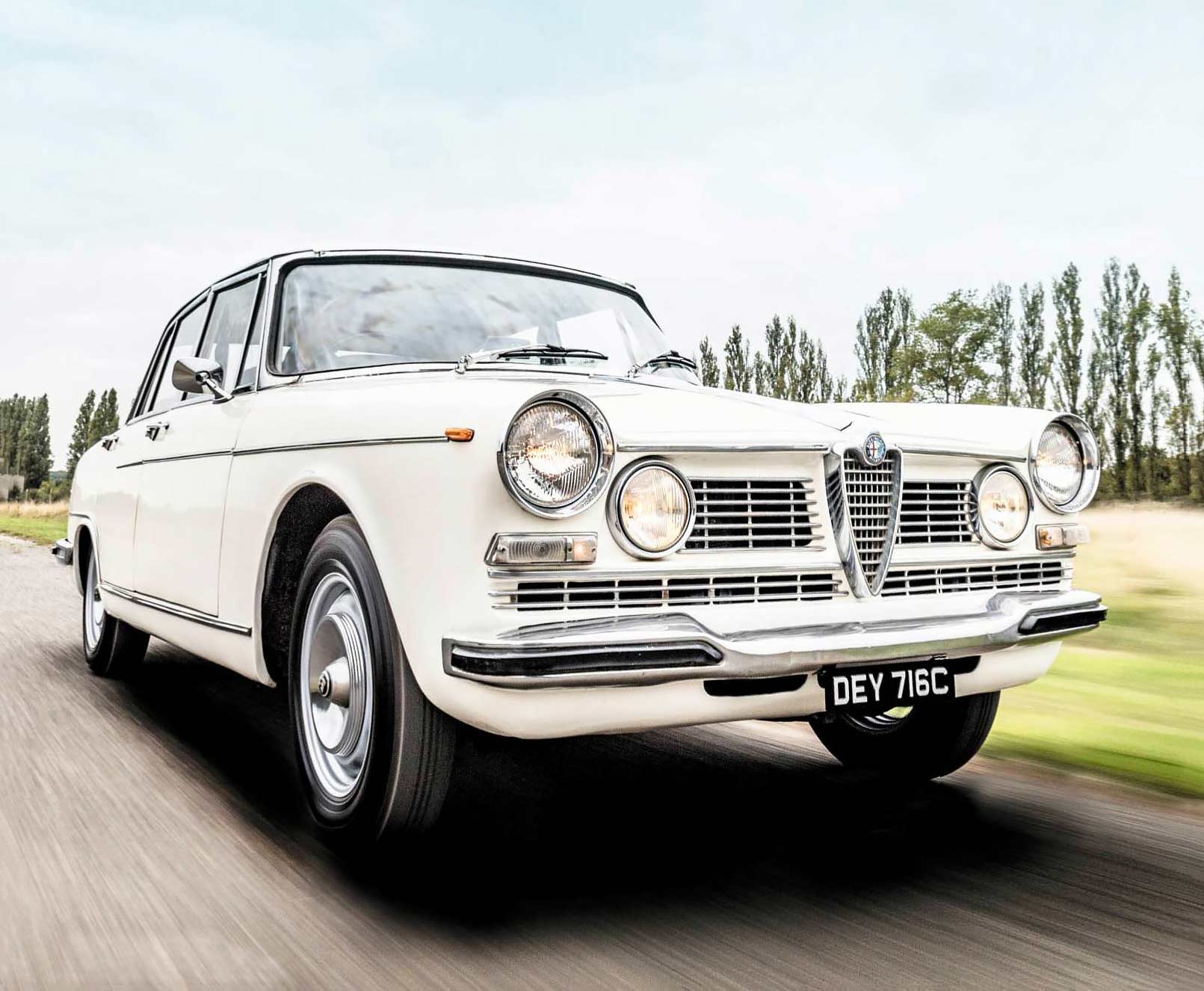
On arrival in the UK there was duty to be paid and when the Berlina finally reached the Wilson home in Northamptonshire, it wouldn’t start. The car had sat in a container for two months and had perished tyres and a dead electrical system.
Jeremy had little time to ponder the vagaries of South Africa’s MoT equivalent because along with the electrics and rubber issues, there was a vagueness in the steering too. It was eventually fixed by some adjustments to the steering box.
The state of the interior wasn’t bad and the body proved good. ‘It needed no welding; the sills were original, the doors looked good and the jacking points were still sound. However, it needed a suspension rebuild and the engine smoked like mad. There was a load of oil getting into the cylinder bores and I had to narrow the points gap – a tricky job on because it requires considerable precision.
‘The electrical component situation is getting more tricky, but the brakes are from Girling and the master cylinder is from an Austin Champ. As for body and glass supplies, spares are almost non-existent. But it’s all been worth it – I’ve gained an extraordinarily rare and practical rust-free car.’
TECHNICAL DATA FILE SPECIFICATIONS Alfa Romeo 2600 Berlina
Engine 2582cc straight-six, dohc with twin dual-choke Solex 32 PAIA carburettors
Power and torque 130bhp @ 5900rpm; 148lb ft @ 3400rpm / DIN
Transmission Five-speed manual, rear-wheel drive
Steering Worm-and-roller
Suspension
Front: independent coil springs and wishbones with telescopic dampers and anti-roll bar.
Rear: live axle with coil springs, telescopic dampers, longitudinal torque arms, antiroll Bar
Brakes Discs front, drums rear, servo assistance
Weight 1406kg (3100lb)
Performance Top speed: 108mph; 0-60mph: 13sec
Fuel consumption 19mpg
Cost new £2271
Classic Cars Price Guide £9000-£22,000
